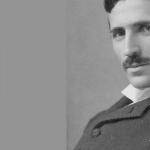Or electric shock called a directionally moving stream of charged particles, such as electrons. Also called electricity is the energy obtained as a result of such movement of charged particles, and the lighting that is obtained on the basis of this energy. The term "electricity" was introduced by the English scientist William Gilbert in 1600 in his essay On the Magnet, Magnetic Bodies, and the Great Magnet, the Earth.
Gilbert conducted experiments with amber, which, as a result of friction against the cloth, was able to attract other light bodies, that is, it acquired a certain charge. And since amber is translated from Greek as an electron, the phenomenon observed by the scientist was called "electricity".
Electricity
A little theory about electricity
Electricity is able to create an electric field around conductors of electric current or charged bodies. By means of an electric field, it is possible to influence other bodies that have an electric charge.fv
Electric charges, as everyone knows, are divided into positive and negative. This choice is conditional, however, due to the fact that it has long been made historically, it is only for this reason that a certain sign is assigned to each charge.
Bodies that are charged with the same type of sign repel each other, and those that have different charges, on the contrary, attract.
During the movement of charged particles, that is, the existence of electricity, in addition to the electric field, a magnetic field also arises. This allows you to set relationship between electricity and magnetism.
It is interesting that there are bodies that conduct electric current or bodies with very high resistance. This was discovered by the English scientist Stephen Gray in 1729.
The study of electricity, most fully and fundamentally, is engaged in such a science as thermodynamics. However, the quantum properties of electromagnetic fields and charged particles are studied by a completely different science - quantum thermodynamics, however, some of the quantum phenomena can be quite simply explained by ordinary quantum theories.
Basics of electricity
The history of the discovery of electricity
To begin with, it must be said that there is no such scientist who can be considered the discoverer of electricity, since from ancient times to the present day, many scientists study its properties and learn something new about electricity.
- The first who became interested in electricity was the ancient Greek philosopher Thales. He discovered that amber, which is rubbed against wool, acquires the property of attracting other light bodies.
- Then another ancient Greek scientist, Aristotle, studied some eels, which struck enemies, as we now know, with an electric discharge.
- In 70 AD, the Roman writer Pliny studied the electrical properties of resin.
- However, then for a long time no knowledge was gained about electricity.
- And only in the 16th century, the court physician of the English Queen Elizabeth 1, William Gilbert, began to study electrical properties and made a number of interesting discoveries. After that, literally "electrical insanity" began.
- Only in 1600 did the term "electricity" appear, introduced by the English scientist William Gilbert.
- In 1650, thanks to the mayor of Magdeburg, Otto von Guericke, who invented the electrostatic machine, it became possible to observe the effect of repulsion of bodies under the influence of electricity.
- In 1729, the English scientist Stephen Gray, while conducting experiments on the transmission of electric current over a distance, accidentally discovered that not all materials have the ability to transmit electricity in the same way.
- In 1733, the French scientist Charles Dufay discovered the existence of two types of electricity, which he called glass and resin. They received these names due to the fact that they were detected by rubbing glass on silk and resin on wool.
- The first capacitor, that is, the storage of electricity, was invented by the Dutchman Pieter van Muschenbroek in 1745. This capacitor was called the Leyden jar.
- In 1747, the American B. Franklin created the world's first theory of electricity. According to Franklin, electricity is an intangible liquid or fluid. Another merit of Franklin to science is that he invented a lightning rod and with it proved that lightning has an electrical origin. He also introduced such concepts as positive and negative charges, but did not discover the charges. This discovery was made by the scientist Simmer, who proved the existence of charge poles: positive and negative.
- The study of the properties of electricity passed to the exact sciences after in 1785 Coulomb discovered the law on the force of interaction occurring between point electric charges, which was called Coulomb's Law.
- Then, in 1791, the Italian scientist Galvani published a treatise on the fact that in the muscles of animals, when they move, an electric current arises.
- The invention of the battery by another Italian scientist - Volt in 1800, led to the rapid development of the science of electricity and to the subsequent series of important discoveries in this area.
- This was followed by the discoveries of Faraday, Maxwell and Ampère, which took place in just 20 years.
- In 1874, the Russian engineer A.N. Lodygin received a patent for an incandescent lamp with a carbon rod invented in 1872. Then a tungsten rod was used in the lamp. And in 1906, he sold his patent to the Thomas Edison Company.
- In 1888, Hertz registers electromagnetic waves.
- In 1879, Joseph Thomson discovers the electron, which is the material carrier of electricity.
- In 1911, the Frenchman Georges Claude invented the world's first neon lamp.
- The twentieth century gave the world the theory of quantum electrodynamics.
- In 1967, another step was taken towards the study of the properties of electricity. This year the theory of electroweak interactions was created.
However, these are only the main discoveries made by scientists, and contributed to the use of electricity. But research continues even now, and every year there are discoveries in the field of electricity.
Everyone is sure that the greatest and most powerful in terms of discoveries related to electricity was Nikola Tesla. He himself was born in the Austrian Empire, now it is the territory of Croatia. In his baggage of inventions and scientific works: alternating current, field theory, ether, radio, resonance and much more. Some admit the possibility that the phenomenon of the “Tunguska meteorite” is nothing more than the work of the hands of Nikola Tesla himself, namely, an explosion of enormous power in Siberia.

Lord of the World - Nikola Tesla
For a while it was believed that electricity did not exist in nature. However, after B. Franklin established that lightning has an electrical origin, this opinion ceased to exist.
The importance of electricity in nature, as well as in human life, is quite huge. After all, it was lightning that led to the synthesis of amino acids and, consequently, to the emergence of life on earth..
Processes in the nervous system of humans and animals, such as movement and breathing, occur due to the nerve impulse that occurs due to the electricity that exists in the tissues of living beings.

Some types of fish use electricity, or rather electrical discharges, to protect themselves from enemies, search for food under water and get it. These fish are: eels, lampreys, electric rays and even some sharks. All these fish have a special electric organ that works on the principle of a capacitor, that is, it accumulates a sufficiently large electric charge, and then discharges it onto the victim who has touched such a fish. Also, such an organ operates at a frequency of several hundred hertz and has a voltage of several volts. The current strength of the electric organ of fish changes with age: the older the fish becomes, the greater the current strength. Also, thanks to the electric current, fish that live at great depths navigate in the water. The electric field is distorted by the action of objects in the water. And these distortions help the fish navigate.

Deadly experiences. Electricity
Getting electricity
Power plants were specially created to generate electricity. Power plants use generators to create electricity, which is then transferred to places of consumption through power lines. Electric current is created due to the transition of mechanical or internal energy into electrical energy. Power plants are divided into: hydroelectric power plants or hydroelectric power plants, thermal nuclear, wind, tidal, solar and other power plants.
In hydroelectric power plants, the turbines of the generator, moving under the influence of the flow of water, generate electricity. In thermal power plants or, in other words, CHPs, electric current is also generated, but instead of water, water vapor is used, which occurs in the process of heating water during the combustion of fuel, such as coal.
A very similar principle of operation is used in a nuclear power plant or nuclear power plant. Only nuclear power plants use a different type of fuel - radioactive materials, such as uranium or plutonium. There is a fission of their nuclei, due to which a very large amount of heat is released, which is used to heat the water and turn it into water vapor, which then enters the turbine that generates electricity. These stations require very little fuel to operate. So ten grams of uranium generates the same amount of electricity as a car of coal.
Use of electricity
Nowadays, life without electricity is becoming impossible. It is quite densely entered into the life of people of the twenty-first century. Often electricity is used for lighting, for example, using an electric or neon lamp, and for transmitting all kinds of information using telephone, television and radio, and in the past, telegraph. Also, back in the twentieth century, a new area of application of electricity appeared: a power source for electric motors in trams, subway trains, trolleybuses and electric trains. Electricity is necessary for the operation of various household appliances, which significantly improve the life of a modern person.
Today, electricity is also used to produce quality materials and process them. With the help of electric guitars, powered by electricity, you can create music. Also, electricity continues to be used as a humane way of killing criminals (electric chair) in countries that allow the death penalty.
Also, given that the life of a modern person becomes almost impossible without computers and cell phones, which require electricity to operate, the importance of electricity will be difficult to overestimate.
Electricity in mythology and art
In the mythology of almost all peoples there are gods who are able to throw lightning, that is, who know how to use electricity. For example, among the Greeks, Zeus was such a god, among the Hindus, Agni, who knew how to turn into lightning, among the Slavs, it was Perun, and among the Scandinavian peoples, Thor.
Cartoons also have electricity. So in the Disney cartoon Black Cape there is an anti-hero Megavolt, who is able to command electricity. In Japanese animation, the Pokemon Pikachu has electricity.
Conclusion
The study of the properties of electricity began in ancient times and continues to this day. Having learned the basic properties of electricity and learning how to use them correctly, people have greatly facilitated their lives. Electricity is also used in factories, factories, etc., that is, it can be used to receive other benefits. The importance of electricity, both in nature and in the life of modern man, is enormous. Without such an electrical phenomenon as lightning, life would not have arisen on earth, and without nerve impulses, which also arise due to electricity, it would not be possible to ensure coordinated work between all parts of organisms.
People have always been grateful for electricity, even when they did not know about its existence. They endowed their main gods with the ability to throw lightning.
Modern man also does not forget about electricity, but is it possible to forget about it? He endows cartoon and movie characters with electrical abilities, builds power plants to generate electricity, and much more.
Thus, electricity is the greatest gift given to us by nature itself and which we, fortunately, have learned to use.
For the stable life of our metropolis, energy is needed equal to 100 million kWh per day, and this is about 38 billion kWh per year. Who and what provides Moscow with electricity? On Raushskaya embankment there is hydroelectric power station No. 1 (the oldest power plant in the capital), which is not only a UNESCO monument, but also generates electricity to supply the State Duma, the Kremlin, Lubyanka Square and the metro. The rated power of the station is 86 MW. The station was built by order of Emperor Alexander III to connect electricity to the first trams. Over the 114 years of HPP-1's existence, its capacity has increased 10 times.
The main source of electricity supply in Moscow are thermal power plants, in the amount of 15 units.
Another feature of Moscow's power supply is the Moscow Energy Ring, which is formed by high-voltage power lines (voltage 500 kV) and a group of powerful substations (SS) located both within the city and in the Moscow region. The main task of these nodal substations is to lower the voltage from 500 to 220 and 110 kV and transfer it to nodal distribution substations.
Dear readers and just visitors to our magazine! We write quite a lot and in some detail about how, with the help of which energy resources, electricity is produced at power plants. Atom, gas, water - were our "heroes" with you, except that we have not yet managed to get to alternative, "green" options. But, if you look closely, the stories were far from complete. We have never tried to track in detail the path of electricity from the turbine to our outlets, with paths to illuminate our settlements and roads, to ensure the operation of numerous pumps that ensure the comfort of our homes.
These roads and paths are by no means simple, sometimes winding and changing direction many times, but to know how they look is the duty of every cultured person of the 21st century. A century whose appearance is largely determined by the electricity that has conquered us, which we have learned to transform in such a way that all our needs are satisfied - both in industry and in private use. The current in the wires of power lines and the current in the batteries of our gadgets are very different currents, but they remain the same electricity. What efforts do electric power engineers and engineers have to make to provide the most powerful currents of steelworks and small, tiny currents, for example, of wrist watches? How much work has to be done by all those who support the system of transformations, transmission and distribution of electricity, by what methods is the stability of this system ensured? What is the difference between "System Operator" and "Federal Grid Company", why both of these companies were, are and will be in Russia not private but state-owned?
There are a lot of questions, you need to know the answers to them in order to more or less understand why we need so many power engineers and what, roughly speaking, are they doing? After all, we are so used to the fact that everything is in perfect order with electricity in houses and cities, that we only remember about electrical engineers when something suddenly stops working, when we fall out of the usual comfort level zone. It's dark and cold - that's just when we talk about energy drinks, and we say words that we definitely won't print.
We are sure that we were frankly lucky - a true professional agreed to take on this difficult, necessary, and even huge topic. Please love and favor - Dmitry Talanov, Engineer with a capital letter. You know, there is such a country - Finland, in which the title of engineer is so significant that at one time a catalog was published annually with a list of specialists who had it. I would like such a glorious tradition to appear in Russia someday, since in our electronic and Internet age it is much easier to start such an annually updated catalog.
The article that we bring to your attention on engineering is short, accurate and capacious. Of course, everything that Dmitry wrote can be told in much more detail, and at one time our magazine began a series of articles about how electricity was conquered in the 19th century.
Georg Ohm, Heinrich Hertz, André-Marie Ampère, Alessandro Volt, James Watt, Faraday, Jacobi, Lenz, Gramm, Fontaine, Lodygin, Dolivo-Dobrovolsky, Tesla, Yablochkov, Depreux, Edison, Maxwell, Kirchhoff, the Siemens brothers and the Westinghouse brothers - in the history of electricity there are many glorious names worthy of being remembered by us. In general, if someone wants to remember the details of how it all began, you are welcome, and Dmitry's article is the beginning of a completely different story. We really hope that you will like it, and we will see the continuation of Dmitry Talanov's articles in the very near future.
Dear Dmitry on my own behalf - with the debut, to all readers, please - do not skimp on the comments!
What is electric current, where does it come from and how does it get to our homes?
Why do we need electricity and how much it helps us live, everyone can find out by looking critically at their home and place of work.
The first thing that catches your eye is the lighting. And it is true that without it, even an 8-hour working day would turn into flour. Getting to work in many megacities is already a small happiness, but what if you have to do it in the dark? And in the winter it goes both ways! Gas lamps will help on the main highways, but turned a little to the side, and you can not see a single light. You can easily fall into a basement or a pit. And outside the city in nature, illuminated only by the light of stars?

Street lighting at night, Photo: pixabay.com
There is also nothing to remove the heat from the offices, where I hardly got to, without electricity. You can, of course, open the windows and tie a wet towel around your head, but for how long will this help. Pumps pumping water also need electricity, or you will have to regularly walk with a bucket to a manual column.
Coffee in the office? Forget! Only if all at once and not often, so that the smoke from burning coal does not poison the working atmosphere. Or for additional money to receive from a nearby tavern.
Send a letter to a nearby office? You need to take paper, write a letter by hand, then carry it with your legs. To the other side of town? We call the courier. To another country? Do you know how much it will cost? In addition, do not expect an answer earlier than six months from neighboring countries and from one to five years from overseas.
Returned home, it is necessary to light candles. Reading in front of them is a torment for the eyes, so you have to do something else. With what? There is no TV, no computers, no smartphones - and those are not there, because there is nothing to power them with. Lie on the bench and look at the ceiling! Although the birth rate will definitely increase.
Add to this that all plastics and fertilizers are now obtained from natural gas in factories where thousands of motors are spinning, driven by the same electricity. Hence, the list of available fertilizers is greatly shortened to those that can be prepared from natural raw materials in vats, stirring the poisonous slurry into them with hand, water or steam-driven shovels. As a result, the volume of products produced is greatly compressed.
Forget about plastics! Ebonite is our highest happiness from a long list. And of the metals, cast iron is becoming the most affordable. From medicine, the stethoscope and the rapidly rusting scalpel again appear as the main tool on the stage. The rest will sink into oblivion.
You can continue for a long time, but the idea should be clear by now. We need electricity. We can survive without it, but what kind of life would it be! So where did this magical electricity come from?
Discovery of electricity
We all know the physical truth that nothing disappears without a trace, but only passes from one state to another. The Greek philosopher Thales of Miletus encountered this truth in the 7th century BC. e. discovering electricity as a form of energy by rubbing a piece of amber with wool. At the same time, part of the mechanical energy turned into electrical energy and amber (in ancient Greek “electron”) became electrified, that is, it acquired the properties to attract light objects.
This type of electricity is now called static electricity, and it has found wide application, including in gas purification systems at power plants. But in ancient Greece, he did not find application, and if Thales of Miletus had not left behind records of his experiments, we would never have known who the first thinker was, who focused his attention on the form of energy, which is perhaps the purest among all with whom we are familiar to this day. It is also the most convenient to manage.
The term "electricity" - that is, "amber" - was coined by William Gilbert in 1600. From that time on, they began to experiment widely with electricity, trying to unravel its nature.
As a result, from 1600 to 1747, a series of exciting discoveries followed and the first theory of electricity appeared, created by the American Benjamin Franklin. He introduced the concept of positive and negative charge, invented a lightning rod and with its help proved the electrical nature of lightning.
Then, in 1785, Coulomb's law was discovered, and in 1800, the Italian Volta invented a galvanic cell (the first direct current source, the predecessor of current batteries and accumulators), which was a column of zinc and silver circles separated by paper soaked in salted water. With the advent of this then stable source of electricity, new and important discoveries quickly follow one after another.

Michael Faraday giving the Christmas Lecture at the Royal Institution. A fragment of a lithograph, Photo: republic.ru
In 1820, the Danish physicist Oersted discovered electromagnetic interaction: by closing and opening a circuit with direct current, he noticed the cyclic oscillations of a compass needle located near a conductor. And in 1821, the French physicist Ampere discovered that an alternating electromagnetic field is formed around a conductor with an alternating electric current. This allowed Michael Faraday to discover electromagnetic induction in 1831, describe the electric and magnetic fields with equations, and create the first alternating current generator. Faraday pushed a coil of wire into a magnetized core, and as a result, an electric current appeared in the coil winding. Faraday also invented the first electric motor - a conductor with an electric current revolving around a permanent magnet.
It is impossible to mention all the participants in the “electricity race” in this article, but the result of their efforts was an experimentally provable theory describing electricity and magnetism in detail, according to which we now produce everything that requires electricity to function.
Direct or alternating current?
In the late 1880s, before world standards for the production, distribution and consumption of industrial electricity, a battle broke out between the proponents of the use of direct and alternating current. Tesla and Edison stood at the head of the opposing armies.
Both were talented inventors. Unless Edison had much more developed business abilities and by the time the “war” began, he managed to patent many technical solutions that used direct current (at that time in the USA, direct current was the default standard; constant current is a current whose direction does not change along time).

But there was one problem: in those days, direct current was very difficult to transform into a higher or lower voltage. After all, if today we receive electricity at 240 volts, and our phone requires 5 volts, we plug into the socket a universal box that converts anything into anything in the range we need, using modern transistors controlled by tiny logic circuits with sophisticated software. And what could be done when there were still 70 years left before the invention of the most primitive transistors? And if, according to the conditions of electrical losses, it was required to increase the voltage to 100,000 volts in order to deliver electricity to a distance of 100 or 200 kilometers, any Volt columns and primitive DC generators turned out to be powerless.
Understanding this, Tesla advocated alternating current, the transformation of which into any voltage levels was not difficult even in those days (a variable is a current whose magnitude and direction periodically change over time even with a constant resistance to this current; at a network frequency of 50 Hz this happens 50 times per second). Edison, not wanting to lose patent royalties to himself, launched a campaign to discredit alternating current. He assured that this type of current was especially dangerous for all living things, and as proof he publicly killed stray cats and dogs by applying electrodes connected to an alternating current source to them.
Edison lost the battle when Tesla offered to light up the entire city of Buffalo for $399,000 against Edison's offer to do the same for $554,000. On the day when the city was lit up with electricity received from the station located at Niagara Falls and producing exactly alternating current, the company General Electric dropped direct current from consideration in her future business projects, fully supporting alternating current with her influence and money.

Thomas Edison (USA), Fig.: cdn.redshift.autodesk.com
It may seem that alternating current has conquered the world forever. However, he has hereditary ailments that grow from the very fact of variability. First of all, these are electrical losses associated with losses in the inductive component of the wires of power lines, which are used to transmit electricity over long distances. These losses are 10-20 times higher than the possible losses in the same transmission lines in the case of direct current flowing through them. Plus, the increased complexity of synchronizing the nodes of the power system affects (for a better understanding of, say, individual cities), because this requires not only to equalize the voltages of the nodes, but also their phase, because the alternating current is a sinusoid wave.
From here, a much greater commitment to the “swings” of the nodes in relation to each other is visible, when the voltage-frequency begins to change up and down, which the average consumer pays attention to when the light is flashing in his apartment. Usually this is a harbinger of the end of the joint operation of the nodes: the connections between them are torn and some nodes turn out to be with a shortage of energy, which leads to a decrease in their frequency (i.e., to a decrease in the rotation speed of the same electric motors and fans), and some with an excess of energy causing a dangerous increase in voltage throughout the site, including our sockets with devices connected to them. And with a sufficiently large length of power lines, which, for example, is critical for the Russian Federation, other effects that spoil the mood of electricians begin to appear. Without going into details, it can be pointed out that it becomes difficult, and sometimes impossible, to transmit AC electricity over wires over extremely long distances. For information, the 50 Hz wavelength is 6000 km, and as you approach half of this length - 3000 km - the effects of traveling and standing waves begin to affect, plus the effects associated with resonance.
These effects are absent when direct current is used. This means that the stability of the energy system as a whole increases. Taking this into account, as well as the fact that computers, LEDs, solar panels, batteries and much more use direct current for their work, we can conclude that the war on direct current is not yet lost. There is very little left for modern DC converters for any power and voltage used today to equal the price of AC transformers familiar to mankind. After that, apparently, a triumphal procession across the planet of already direct current will begin.
Electricity is an integral part of our life. Every day, we use many household electrical appliances without thinking, not to mention production. Where does the energy we need come from? Even children know the answer to this question: it is produced by power plants. But not everyone knows how it comes from the power plant to us, consumers. We will try to answer this question in our article.
So, let's start with power plants. Everyone knows the main types of power plants: nuclear power plants, hydroelectric power plants, thermal power plants. Many have probably heard about the existence of diesel generator sets and mini power plants, which are increasingly being used on construction sites, as protection against blackouts in hospitals, and can also provide electricity to a private house, etc. In Europe, wind and solar energy are also used to generate electricity. Scientists around the world are also working on alternative types of electricity, such as fusion reactions, biomass power plants.
In our country, today the main sources of electricity are nuclear power plants, hydroelectric power plants and thermal power plants. More than half of the electricity produced by thermal power plants. Most often, such power plants are located in places where fuel is extracted. In cities, combined heat and power plants can also be used, which provide the city not only with electricity, but also with hot water and heat. The cheapest electricity is produced by hydroelectric power plants.
Nuclear power plants are the most modern. One of the most important advantages is the fact that they are not tied to the source of raw materials, and therefore can be placed almost anywhere. Nuclear power plants also do not pollute the environment, provided that all natural factors are taken into account and the requirements for their construction are met.
But here we have a power plant that produces electricity. What happens next? And then the electricity from the electrically removable tires is supplied to the electrical part of the power plant, which can be open, closed and combined. In the electrical part there is a control room for power plant control, an automated process control system (APCS), switching devices, relay protection, instrumentation and alarms, high-voltage step-up and step-down transformers, high-voltage circuit breakers, busbars and autotransformers. After the conversion of energy, electricity is supplied to a high-voltage power line (VTL). Power transmission lines designed to transport electricity over long distances must have a large capacity and low losses, and consist of wires, poles, fasteners, lightning protection cables, and auxiliary devices. According to their purpose, power transmission lines are divided into ultra-long, trunk and distribution. The main elements of overhead power lines are metal poles, which are installed at a certain distance from each other. They are anchor, intermediate and angular. Anchor supports are installed at the beginning and end of the power line, as well as at the crossing points of engineering structures or natural barriers. Intermediate supports are installed on straight sections and are designed to support wires with an allowable sag of 6-8 meters in populated areas, and 5-7 meters in non-populated areas. Corner supports are installed at the angles of rotation of the power line. Special transposition poles are installed to change the order of arrangement on the poles, as well as to branch the wires from the main line of the overhead power transmission line. For the transmission of electricity in high-voltage power lines, uninsulated wires are used, made of aluminum and steel-aluminum of the following grades: AN, AZh, AKP (aluminum) and VL, AS, AKS, ASKP, ASK (steel-aluminum). The wires are attached to the poles with the help of supporting or tension insulators, which are mounted on the pole in a suspended way, and mounting fittings. In turn, insulators are porcelain, coated with glaze, glass, tempered glass, and polymer, from special plastics. To protect the power line from lightning, lightning protection cables are pulled on the poles, arresters are installed, and the poles are grounded. Since the line usually runs for a long distance, intermediate substations with step-up transformers are used to avoid voltage losses.
For further distribution of electricity, distribution substations are connected to the main overhead transmission lines, which, in turn, distribute electricity to step-down substations. When distributing electricity from the substation to the PTS, 2 types of cable laying can be used: overhead and underground. In air laying, aluminum or steel-copper bare wires are usually used, which are suspended on supports. For underground laying, a power cable with copper or aluminum conductive conductors and armor is used, which provides reliable protection against mechanical stress. Cables of this type include brands designed for operation at voltages up to 35 kV, for example, either (6-10 kV) or (10-35 kV). If the transformer substation is located at a great distance, then the use of a power cable will not be economically viable, in which case an air laying is used.
From the step-down substation along the power lines, energy is distributed between the PTS, which are divided into mast and kiosk (through and dead-end). Complete transformer substations carry out voltage reduction from 10 (6) to 0.4 kV alternating current with a frequency of 50 Hz and are designed to supply electricity to private houses, individual settlements or small industrial facilities. In mast transformer substations, the input and output of the cable is carried out using overhead lines. KTP kiosk type serve for the same purposes, but are installed in the simplest concrete platform and have a serious advantage - they allow input and output, both by air and underground.
For the removal of overhead lines, self-supporting aluminum insulated SIP wires are used, which are suspended on wooden or concrete supports using mounting fittings. This method of laying a distribution line is used in private sectors, garage cooperatives or where it is necessary to supply a large number of consumers located at some distance from each other. For laying underground lines, a power cable with aluminum or copper conductors, insulated from various materials, shielded, armored, with or without a protective cover is used. Depending on the laying method, different brands of cable can be used. For laying in special double-walled corrugated pipes, power cables without a protective cover and armor, such as AVVG or. For laying in trenches, cables with armor and protective covers are used, which have good protection against physical and mechanical impact. These are cables like and (with armor and protective cover) or and (with armor without protective cover). In addition, depending on the nature of the stray currents, power cables with different types of screens can be used, which are designed for laying both in trenches and in protected pipes. These cables include brands or.
From the transformer substation, electricity is transmitted through selected wires to distribution points, which are located in specially designated rooms (panel boards). Distribution devices are installed in the control rooms, which not only provide power transmission to apartments, but also supply floor and emergency lighting, elevators, ventilation, air conditioning and security systems. Distribution from the switchboard to floor switchboards is carried out using cables, which, according to fire safety conditions, must not spread combustion and have low smoke and gas emission rates. Such brands of cables include (aluminum conductors), (copper conductors). For laying the trunk line, special fastening brackets are also used, which ensure the safety of the cable for the entire service life. In addition, a bus duct can be used to supply power from the switchboard to floor shields, which has a number of advantages compared to a cable trunk line. These include ease of installation (sections are assembled and mounted in a niche without any problems), smaller dimensions compared to a cable line (sections consist of copper or aluminum tires, which are stripped by a metal case), ease of further operation. And, finally, from the floor boards, electricity is supplied to the meter or the metering and distribution board of the apartment.
This question is like cabbage, you open it, you open it, but it is still far from the "fundamental" stump. Although the question, apparently, concerns this very stalk, you still have to try to overcome all the cabbage.
At the most superficial glance, the nature of current seems simple: current is when charged particles move. (If the particle does not move, then there is no current, there is only an electric field.) Trying to comprehend the nature of the current, and not knowing what the current consists of, we chose the direction for the current corresponding to the direction of movement of positive particles. Later it turned out that an indistinguishable current, exactly the same in effect, is obtained when negative particles move in the opposite direction. This symmetry is a remarkable detail of the nature of the current.
Depending on where the particles are moving, the nature of the current is also different. The current material itself is different:
- Metals have free electrons;
- In metal and ceramic superconductors - also electrons;
- In liquids, ions that are formed during chemical reactions or when exposed to an applied electric field;
- In gases - again ions, as well as electrons;
- But in semiconductors, electrons are not free and can move "relay". Those. It is not an electron that can move, but, as it were, a place where it does not exist - a "hole". Such conduction is called hole conduction. On the spikes of different semiconductors, the nature of such a current gives rise to effects that make all of our radio electronics possible.
Current has two measures: current strength and current density. Between the current of charges and the current, for example, of water in a hose, there are more differences than similarities. But such a view of the current is quite productive for understanding the nature of the latter. The current in the conductor is a vector field of particle velocities (if they are particles with the same charge). But we usually do not take these details into account when describing the current. We average this current.
If we take only one particle (naturally charged and moving), then the current equal to the product of the charge and the instantaneous speed at a particular moment of time exists exactly where this particle is located. Remember how it was in the song of the duet Ivasi "It's time for a beer": "... if the climate is heavy and hostile astral, if the train left and took all the rails..." :)
And so we came to that stump, which was mentioned at the beginning. Why does a particle have a charge (it seems that everything is clear with movement, but what is a charge)? The most fundamental particles (now for sure:) seemingly indivisible) carrying a charge are electrons, positrons (antielectrons) and quarks. It is impossible to pull out and study a single quark due to confinement, it seems easier with an electron, but it is also not very clear yet. At the moment, it is clear that the current is quantized: there are no charges less than the charge of an electron (quarks are observed only in the form of hadrons with the total charge of the same or zero). An electric field separately from a charged particle can exist only in conjunction with a magnetic field, as an electromagnetic wave, the quantum of which is a photon. Perhaps some interpretation of the nature of the electric charge lies in the field of quantum physics. For example, the Higgs field she predicted and recently discovered (there is a boson, there is a field) explains the mass of a series of particles, and mass is a measure of how a particle responds to a gravitational field. Maybe with a charge, as with a measure of response to an electric field, some similar story will be revealed. Why is there a mass and why is there a charge - these are somewhat related questions.
Much is known about the nature of electric current, but the most important thing is not yet known.

















